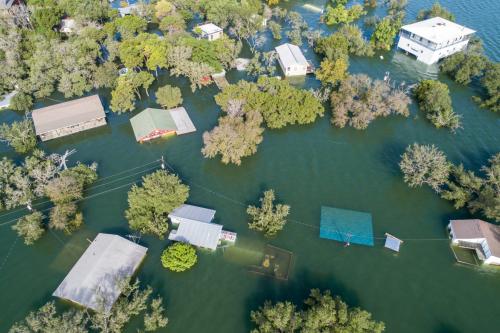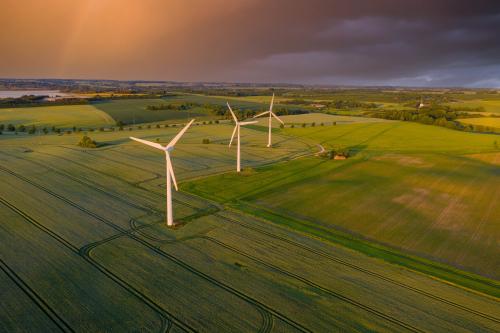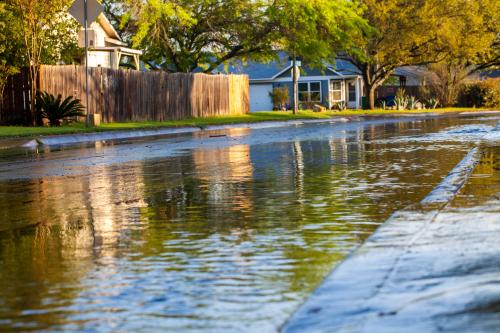This post was originally published on Denver Post.
Even by recent standards of the destruction wrought by climate change, December’s wildfires in Boulder County, Colo. were especially haunting. In just a few hours—in some cases, minutes—fires engulfed entire homes and then whole neighborhoods. Families had little time to collect their belongings, if they could get back home at all. The fires caused at least $513 million in damage and destroyed 1,100 buildings. Many households may be underinsured or unable to recoup their losses.
Described as an “urban firestorm” by scientists, the Colorado wildfires were notable not only because of their unprecedented ferocity, but also because of their location along the wildland-urban interface (WUI) where cities like Boulder are located. This vulnerable WUI is decades in the making, as developers, policymakers, and other leaders across the greater Denver region have demanded—and invested in—sprawling growth. As just one example, in nearby Jefferson County, every 1,000 new residents has resulted in 470 acres of natural land lost in recent years.
The location and design of our built environment—often single-family homes, strip malls, and other low-density development sprawling along the urban fringe—set the stage for all this destruction to take place. America can only adapt to climate realities if we start reconsidering where we invest and what we build. And we can’t transform where and what we build unless we rethink how private capital markets and public investment work together.
Urban climate vulnerabilities aren’t limited to Colorado or wildfires. Basement residents in Queens, N.Y. lost their lives in Hurricane Ida due to a lack of safe, affordable housing in the city. Thousands of households faced destruction in Houston during Hurricane Harvey because insurance markets and government planning permitted construction in flood plains. Even daily temperature fluctuations cause thousands of Americans to suffer in cities that radiate heat due to a lack of urban green space.
Those climate tragedies are the direct result of how we plan and build communities. Federal, state, and local governments keep expanding highways, extending water lines, and building new infrastructure to meet the short-term demands of suburban growth. These infrastructure expansions tend to rely on traditional designs and technologies that pave over land, deplete natural resources, and discharge more pollution. Public funding at all levels continues to subsidize and incentivize this activity, while land use plans, capital budgets, and other policies struggle to incorporate and address evolving climate needs.
Meanwhile, real estate developers, lenders, investors, and insurers keep backing risky growth in areas susceptible to climate hazards. Developers and homebuilders have little incentive to consider climate risks in new projects. Property owners, including homeowners and institutional landlords, lack information on location-specific property risk. Because most real estate is purchased with a mix of debt and equity, no single entity bears the full financial exposure to climate risk. Banks, financial intermediaries, and federal regulators do not transparently measure, assess, or incorporate climate risks in underwriting decisions. Insurers may have property-specific climate risk data, but do not share the information publicly or scramble to keep up with damages unfolding in real time.
Together, public and private leaders often fail to recognize—and price—climate risks across our transportation, water, and real estate assets, while failing to shield communities from harm.
Imagine if we better priced these climate risks. Measuring and adapting to a more extreme climate—through more precise regional data, forward-looking capital plans, and new green infrastructure designs like vegetated buffers and green roofs—not only has the potential to reduce future costs, but can also lead to environmental and economic benefits, including increased resource efficiency, heightened property values, and additional workforce and business development opportunities.
For example, in 2017, the Massachusetts Bay Transportation Authority (MBTA) issued $370 million in sustainability bonds to fund a variety of station improvements, flood protection, and other upgrades to the Boston transit system. Even better, investors loved the benefits and gave the MBTA better terms on its debt.
Rather than investing in the same vulnerable, sprawling projects, we need new approaches that spawn more examples like the MBTA experience. We need financial markets to help boost urban resilience, or the capacity of the built environment to be more flexible and responsive to climate impacts. More funding for climate improvements overall would help, but public and private leaders nationally must rethink how we invest, not simply how much to invest.
Capital markets are America’s best way to achieve the scale of investment the country needs. But those markets need incentives to deliver greater resilience. New Brookings research highlights how such an approach could work through a new climate finance framework—a set of policies and programs that steers more public and private capital toward resilient infrastructure improvements. We know that private dollars will always chase profit, so these rules should push the market to invest in safe locations using durable designs.
That means the insurance industry should give homeowners and private industry more realistic scenarios before they choose where to invest in real estate. Credit ratings of water utilities and other local governments should be downgraded if they invest in locations that are prone to drought-like conditions.
It should be expensive to build the wrong way. Too often, though, it’s the opposite.
The consequences of our current flawed approach are all the displaced Coloradoans now looking for new places to live and stomaching insurance policies that won’t cover all their losses. They will not be the last Americans to deal with this kind of avoidable tragedy. It’s time to retool our financial markets for the climate emergency and make resilient places profitable for both people and the planet.







Commentary
Financial markets fueled Colorado’s fires
February 4, 2022